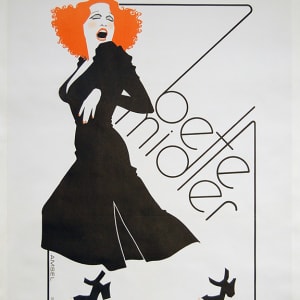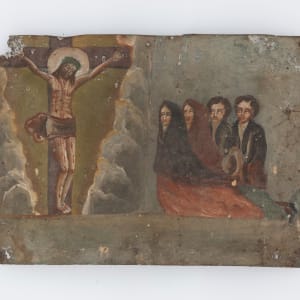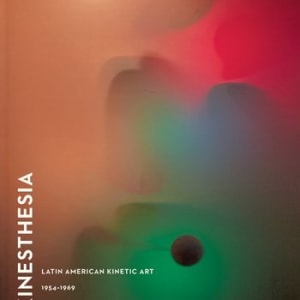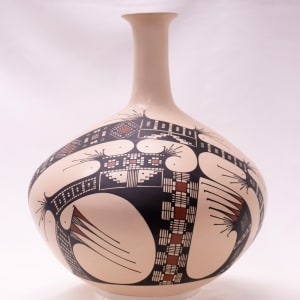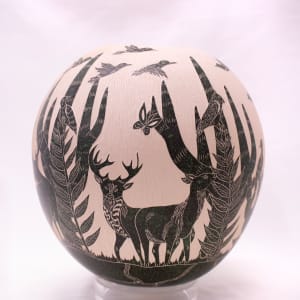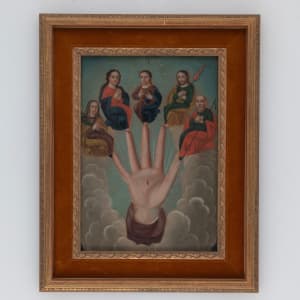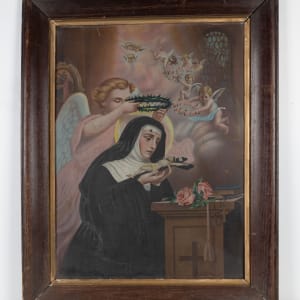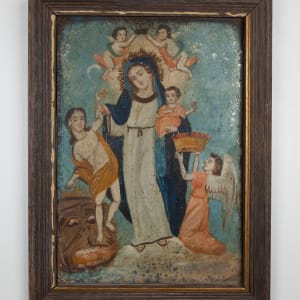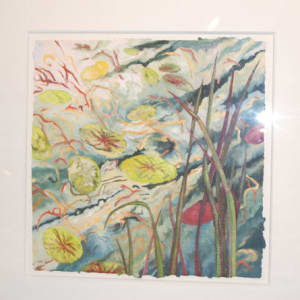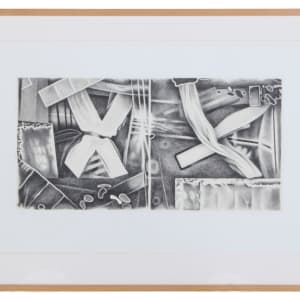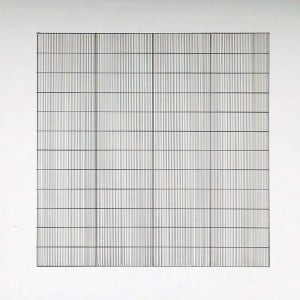Don M. Gonzales Poster Collection
Significant collection of posters produced between 1905 and 1959 which provide insight into the contrasting socio-political perspectives of World War I and World War II from a Western European and United States Perspective. This collection also includes a variety of product, sports, circus, theater, and art exhibition posters.
Ex-Voto Collection
The New Mexico State University Art Museum holds the largest public collection of retablos—religious images painted on tin plates—in the United States. From 1963 to 1973, an important art collection started with generous donations of several Mexican retablos and objects related to sacred art by Dr. and Mrs. Andrew Babey, Pamela Babey, Dr. Reginald Fisher, Dr. and Mrs. Ezra K. Neidich, Mr. C. Andrew Sutherland, Mr. Fran E. Tolland, Ms. Helen McClure and Mr. Victor E. Clarence, along with a recent 2019 donation by renown Retablo scholar Gloria Giffords. Presently, the Art Gallery holds more than 2,000 retablos. Precedents for these retablos can be traced to paintings on wood, copper, and canvas by European and Mexican artists between the sixteenth and eighteenth centuries.
Mexican Retablo Collection
The New Mexico State University Art Museum holds the largest public collection of retablos—religious images painted on tin plates—in the United States. From 1963 to 1973, an important art collection started with generous donations of several Mexican retablos and objects related to sacred art by Dr. and Mrs. Andrew Babey, Pamela Babey, Dr. Reginald Fisher, Dr. and Mrs. Ezra K. Neidich, Mr. C. Andrew Sutherland, Mr. Fran E. Tolland, Ms. Helen McClure and Mr. Victor E. Clarence, along with a recent 2019 donation by renown retablo scholar Gloria Giffords. Presently, the Art Museum holds more than 2,000 retablos. Precedents for these retablos can be traced to paintings on wood, copper, and canvas by European and Mexican artists between the sixteenth and eighteenth centuries.
Modern and Contemporary Art Collection
After years of development the UAG opened its doors to the public in 1974 in D. W. Williams Hall, a retrofitted basketball gymnasium built in 1938. In 1977, with a new art gallery formed, the administration of NMSU made the commitment to supply funds to the gallery to create and expand the NMSU Permanent Art Collection with the primary focus of forming a teaching collection for students and larger community. Two major NEA grants for the purchase of works of art by living American artists further expanded the Collection, and NMSU’s Permanent Art Collection grew by more than 2,000 objects in less than ten years. As a contemporary visual arts hub in southern New Mexico, the UAM provides enriching and informative experiences through participatory engagements with historical art, particularly its collection. In 2019 the University Art Museum (previously the UAG) moved its culturally significant art collection from its location in D. W. Williams Hall to a state-of-the-art, fully climate controlled, 21st century museum facility in the newly constructed Devasthali Hall. The new museum offers public access to the incredible permanent collection, now drawing from 2,000 nineteenth-century Mexican retablos, still the largest collection in the United States, more than 1,700 modern and contemporary works, and the Don Gonzales Collection, a collection of ninety World War I and II era propaganda posters.
Recent Acquisitions
All artworks that have been added since 2016 have taken a new collection mission into account which pledges to diversify our programming and collections by exhibiting and collecting significant works by leading, African American, female, LGBTQ and other underrepresented and marginalized artists. Recent acquisitions that support our mission include the artists: Wendy Red Star, Christine Nguyen, Paul Mpagi Sepuya, Ramiro Gomez, Las Hermanas Iglesias, and most recently a suite composed of eighteen lithographs drawn from over eighteen years of visiting artists to the Tamarind Institute which includes well known artists of color including Nick Cave, Toyin Ojih Odutola, Robert Pruitt, and Enrique Martínez Celaya


